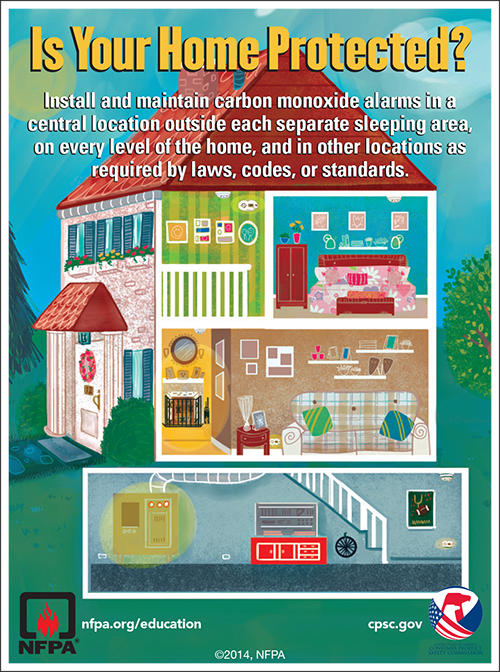Schedule a Battery Change for Smoke Detectors
Front Range Fire Rescue knows that smoke and carbon dioxide alarms save lives in the event of a fire, and proper smoke and carbon monoxide alarm maintenance is crucial to make sure residents are alerted if there is a fire.
Smoke Alarm Tips
- Install smoke alarms in every bedroom. They should also be outside each sleeping area and on every level of the home. Install alarms in the basement.
- Large homes may need extra smoke alarms.
- It is best to use interconnected smoke alarms. When one smoke alarm sounds, they all sound.
- Test all smoke alarms at least once a month. Press the test button to be sure the alarm is working.
- Current alarms on the market employ different types of technology, including multi-sensing, which could include smoke and carbon monoxide combined.
- Today’s smoke alarms will be more technologically advanced to respond to a multitude of fire conditions yet mitigate false alarms.
- A smoke alarm should be on the ceiling or high on a wall. Keep smoke alarms away from the kitchen to reduce false alarms. They should be at least 10 feet (3 meters) from the stove.
- People who are hard of hearing or deaf can use special alarms. These alarms have strobe lights and bed shakers.
- Replace all smoke alarms when they are 10 years old.

Carbon Monoxide Alarm Tips
Although the popularity of carbon monoxide (CO) alarms has been growing in recent years, it cannot be assumed that everyone is familiar with the hazards of carbon monoxide poisoning in the home.
Often called the invisible killer, carbon monoxide is an odorless, colorless gas created when fuels (such as gasoline, wood, coal, natural gas, propane, oil, and methane) burn incompletely. In the home, heating and cooking equipment that burn fuel are potential sources of carbon monoxide. Vehicles or generators running in an attached garage can also produce dangerous levels of carbon monoxide.
- The dangers of CO exposure depend on a number of variables, including the victim's health and activity level. Infants, pregnant women, and people with physical conditions that limit their body's ability to use oxygen (i.e. emphysema, asthma, heart disease) can be more severely affected by lower concentrations of CO than healthy adults would be.
- A person can be poisoned by a small amount of CO over a longer period of time or by a large amount of CO over a shorter amount of time.
For more tips or information please visit The National Fire Protection Association.
Our firefighters will replace batteries in smoke and carbon monoxide alarms for those unable to safely access their units.
- Residents living in rental properties should obtain smoke and carbon monoxide alarms from their landlord, who is legally required to provide both.
- We can only help with battery changes for alarms that are at 12 feet or below. We are somewhat limited by our equipment and have limitations as to what our firefighters can safely do.
- FRFR does not install, maintain, inspect or repair hardwired smoke/CO alarm systems, however, we can change the batteries for you.
If you need help changing your smoke alarm batteries, please email info@frfr.co or call us at 970.587.4464
Residents must have the batteries for their smoke alarms.